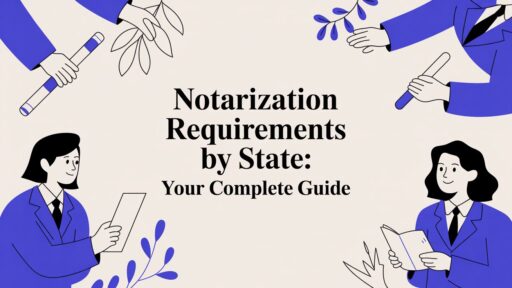Starting a business involves a myriad of steps, and one crucial aspect is obtaining an Employer Identification Number (EIN) from the IRS. This unique identifier is essential for tax purposes, allowing businesses to open bank accounts, hire employees, and file tax returns. Understanding the EIN application process can save time and ensure compliance with federal regulations.
Many entrepreneurs may feel overwhelmed by the paperwork and requirements. However, applying for an EIN is a straightforward process that can be completed online or via mail. With the right guidance, anyone can navigate the application effectively, paving the way for their business to thrive.
Understanding EIN and Its Importance
An Employer Identification Number (EIN) is essential for businesses in the United States. It serves as a unique identifier for tax purposes. Businesses must obtain an EIN to fulfill tax obligations with the IRS.
EIN simplifies various business tasks. It allows for the opening of bank accounts specifically for business purposes. Lenders often require an EIN for business loans. Employers also need this number to report employee wages and taxes.
Below are key reasons why businesses should obtain an EIN:
- Tax Compliance: EIN helps accurately report taxes to the IRS. Without an EIN, businesses face challenges managing their federal tax responsibilities.
- Hiring Employees: EIN is necessary when hiring employees. It facilitates reporting and payment of payroll taxes.
- Business Entity Setup: Sole proprietors and corporations both require an EIN for establishing their business legally.
- Opening Business Bank Accounts: Banks typically require an EIN to open a business account, separating personal and business finances.
- Applying for Business Licenses: Many state and local jurisdictions ask for an EIN while applying for permits or licenses.
Obtaining an EIN presents a simple process. The IRS offers an online application option, allowing for easy access to this number. Businesses can also apply via mail or fax by completing Form SS-4.
Ensuring accurate information on the application enhances the chances of prompt processing. Businesses should confirm their eligibility before applying. Most entities, including partnerships, corporations, and non-profits, qualify for an EIN.
An EIN plays a key role in running a business smoothly. The importance of obtaining this number cannot be overstated, as it simplifies financial and legal operations for businesses of all sizes.
What Is an EIN?
An Employer Identification Number (EIN) acts as a business’s unique tax ID. This number, assigned by the IRS, simplifies tax processing and ensures compliance with federal regulations.
Businesses use an EIN for several critical purposes:
- Tax Reporting: An EIN is essential for filing tax returns accurately. Businesses report income, expenses, and employee wages using this number.
- Hiring Employees: When a business hires employees, an EIN is required to process payroll and manage employee taxes.
- Opening Bank Accounts: Most banks require an EIN to open a business bank account. This separation of business and personal finances promotes better financial management.
- Applying for Licenses and Permits: Many local and state agencies ask for an EIN when businesses apply for necessary licenses and permits.
- Applying for Business Loans: Lenders often request an EIN when assessing loan applications to evaluate the business’s tax status and credibility.
To apply for an EIN, follow these steps:
- Determine Eligibility: Most businesses, including partnerships, corporations, and non-profits, qualify for an EIN.
- Fill Out the Application: Access the online EIN application on the IRS website or complete Form SS-4 if applying by mail.
- Provide Accurate Information: Include relevant details such as the business name, address, and structure. Accuracy ensures quick processing.
- Submit the Application: Submit the application online for immediate processing or mail it to the appropriate IRS address for approval.
- Receive Your EIN: After submission, the IRS assigns the EIN instantly online or sends it through the mail for mailed applications.
Understanding what an EIN is and how to obtain one simplifies starting and operating a business. This number plays a significant role in managing finances and adhering to legal obligations.
Who Needs an EIN?
Various entities benefit from an Employer Identification Number (EIN). Incorporated businesses such as corporations or limited liability companies (LLCs) require an EIN. This number helps manage tax responsibilities and establishes legal standing.
Partnerships must obtain an EIN to file taxes properly and report income accurately. An EIN allows for a clear separation between personal and business assets, ensuring better financial management.
Sole proprietors may not need an EIN unless they hire employees or meet specific criteria. However, obtaining one simplifies financial transactions and tax reporting.
Non-profit organizations require an EIN to operate legally and apply for tax-exempt status. This number helps establish credibility and manage finances responsibly.
Trusts and estates that have employees or operate a business also need an EIN. An EIN ensures proper handling of taxes and compliance with IRS regulations.
Banks and lenders generally request an EIN when opening business accounts or applying for loans. This number is a standard requirement in financial transactions for businesses.
Business entities, including partnerships, corporations, and non-profits, benefit from having an EIN for various legal and financial processes. Obtaining an EIN helps ensure compliance with tax laws and simplifies business operations.
Preparing for the IRS Application for EIN Number
Before starting the application for an Employer Identification Number (EIN), gather necessary information and ensure eligibility.
Required Information
Provide specific details during the EIN application process. Include the following information:
- Entity type: Specify whether the business is a corporation, partnership, LLC, non-profit, or sole proprietorship.
- Business name: State the official name of the business as registered.
- Owner’s name: List the legal name of the business owner or the responsible party.
- Business address: Provide the physical address of the business location.
- SSN or ITIN: Include the Social Security Number or Individual Taxpayer Identification Number of the owner.
- Date of establishment: Note when the business officially began operations.
- Reason for applying: Indicate the main reason for obtaining the EIN, such as hiring employees or opening a bank account.
Accurate and complete information streamlines the application process and reduces delays.
Eligibility Criteria
Verify eligibility to apply for an EIN. The following criteria apply:
- Business type: Most business entities are eligible, including corporations, partnerships, and non-profits.
- Location: EIN applications are available to businesses located in the United States or its territories.
- Owner qualification: Any responsible party with an SSN or ITIN can apply. Foreign entities may qualify if they meet specific conditions.
- Employee status: Employers planning to hire employees need an EIN for tax purposes.
- Tax obligations: Organizations requiring tax filings at the federal level must obtain an EIN.
Confirming eligibility ensures compliance with IRS requirements during the application process.
Steps to Complete the IRS Application for EIN Number
The application process for an Employer Identification Number (EIN) includes several steps, each crucial for ensuring compliance and proper handling of business operations.
Step 1: Determine Your Eligibility
Eligibility for an EIN includes various business structures like corporations, partnerships, and non-profits. Entities located in the United States or its territories qualify. Any responsible party with a Social Security Number (SSN) or Individual Taxpayer Identification Number (ITIN) may apply. If the business involves hiring employees or requires federal tax filings, obtaining an EIN becomes essential. Sole proprietors without employees typically do not need one unless specific conditions apply, such as excise tax or certain business structures. Confirming eligibility guarantees a smoother application process and adherence to IRS regulations.
Step 2: Choose Your Application Method
Two main methods exist for applying for an EIN: online and by mail. The online application is the simplest and fastest option, available on the IRS website. Applicants complete the online form and receive their EIN immediately upon submission. The mail application method involves completing Form SS-4 and sending it to the IRS. This option takes longer, often ranging from four to six weeks for processing. Choosing the online method streamlines the process and ensures quicker receipt of the EIN. Each approach requires accurate information, so businesses should prepare all necessary details beforehand, ensuring a hassle-free experience.
Step 3: Complete the Application Form
Completing the application form for an Employer Identification Number (EIN) requires accuracy and attention to detail. Following these steps ensures a smooth submission.
- Select the Application Method: Choose either the online or mail option. The online application offers immediate processing while the mail option takes longer.
- Access the Application: For online applicants, visit the IRS EIN online application portal. For mail applicants, download and print Form SS-4 from the IRS website.
- Fill in Required Information: Provide relevant details such as the legal name of the business, the entity structure (corporation, partnership, etc.), and the reason for applying. Include the owner’s name and address. Be cautious when entering Social Security Numbers or Individual Taxpayer Identification Numbers.
- Review Your Information: Verify that all information is correct and complete. Check for typos and ensure all required fields are filled. Inaccurate information may delay processing.
- Submit the Application: For online submissions, click the “Submit” button after confirming accuracy. For mail applications, send the completed Form SS-4 to the appropriate IRS address as per the instructions on the form.
- Receive Your EIN: For online applications, obtain the EIN immediately after submission. For mailed applications, allow four to six weeks for processing. The IRS issues the EIN through a confirmation letter.
Completing the application form efficiently leads to obtaining an EIN without unnecessary delays. Each step should be followed carefully to ensure the business remains compliant with IRS requirements.
Step 4: Submit Your Application
Submitting the application for an Employer Identification Number (EIN) involves a few straightforward steps that ensure a smooth process.
- Choose your method: Select between the online application or the mail-in option. The online method saves time and provides the EIN immediately upon submission. The mail option is valid but requires four to six weeks for processing.
- Access the application: For online submissions, visit the IRS website and navigate to the EIN application page. For mail submissions, print the completed form.
- Fill out the application: Enter required details accurately. This includes the entity type, business name, owner’s name, business address, Social Security Number or Individual Taxpayer Identification Number, establishment date, and reason for applying.
- Review details: Check for accuracy to avoid delays. Ensure all information matches supporting documents.
- Submit the application: For online submissions, click the submit button after reviewing the information. For mail submissions, send the completed form to the address specified by the IRS.
- Receive your EIN: Confirmation occurs immediately for online submissions. For mailed applications, expect a wait for four to six weeks for processing and receipt of the EIN.
Following these steps ensures compliance and a successful application for the EIN, facilitating various business operations, including tax reporting and employee hiring.
After You Submit Your IRS Application for EIN Number
Expect the following outcomes once the IRS receives your application for an EIN. The review process usually takes a short time, especially for online submissions. Online applicants typically receive their EIN instantly. Mailed applications may take around four to six weeks for processing. Notifications of any errors or additional requirements come directly from the IRS. Tracking the application status can help identify any issues.
What to Expect
Businesses can anticipate a straightforward process after submission. If the application is complete and accurate, the IRS issues the EIN promptly. Ensure all information provided was correct to avoid delays. Receiving the EIN means the business is now equipped to handle tax obligations. Confirmation of the EIN comes via an official letter from the IRS, also called the SS-4 form. This letter acts as proof of EIN possession and supports other business activities.
How to Retrieve Your EIN
Retrieving an EIN can be simple if it was misplaced. One option includes checking the confirmation letter received after submitting the application. This letter contains the EIN and serves as an official record. If the letter cannot be located, businesses can call the IRS at 1-800-829-4933 for assistance. The IRS will require specific information to verify the identity of the caller. Alternatively, businesses may access their EIN through previously filed tax documents, where the number typically appears.
Troubleshooting Common Issues
Common issues can arise during the EIN application process. Identifying and addressing these problems enhances the experience for all applicants.
Delays in Processing
Delays can occur during the EIN application process. Online applications typically receive instant confirmation. However, mailed applications often take four to six weeks for processing. If an applicant encounters a delay, tracking the application is advisable. Businesses can contact the IRS to check the status of their application. Providing the application details, including the entity’s name and the filing date, helps expedite the inquiry. Maintaining accurate records reduces potential setbacks.
Errors on Application
Errors on the EIN application can lead to complications. Common mistakes include incorrect business names, wrong Social Security Numbers or Individual Taxpayer Identification Numbers, and missing information. An applicant must double-check all entries for accuracy. If an error is found after submission, contacting the IRS promptly is crucial. Correcting the information as soon as possible helps avoid further delays. Applying with accurate information streamlines the process and ensures compliance with IRS standards.
Helpful Tips for a Successful Application
- Prepare necessary information. Before beginning the application, gather all required details. Include entity type, business name, owner’s name, business address, Social Security Number or Individual Taxpayer Identification Number, date of establishment, and reason for applying.
- Choose the right application method. Decide whether to apply online or by mail. The online method processes applications quickly, providing immediate access to the EIN. Mailing the application takes longer, usually four to six weeks.
- Fill out the application correctly. Accuracy is crucial in completing the application form. Ensure that every entry is correct to avoid delays. Review the entire application before submission to check for errors.
- Submit the application promptly. After filling out the application, submit it as soon as possible. For online applicants, immediate receipt of the EIN occurs upon completion. For mailed applications, tracking the status can help monitor progress.
- Monitor application status. If the application does not receive a response within the expected time frame, verify the status. Contact the IRS with relevant details to expedite inquiries and resolve potential issues.
- Store the confirmation letter safely. After receiving the EIN, keep the confirmation letter, known as the SS-4 form, in a secure place. This letter serves as proof of EIN possession and simplifies future requests.
- Double-check information. Make sure to verify all information before submission. Small mistakes can lead to delays in processing or rejection of the application. Prompt correction of any errors can save time.
- Know eligibility requirements. Understand who qualifies for an EIN. Corporations, partnerships, non-profits, and certain sole proprietors must obtain one for tax compliance and legal operation.
- Seek assistance if needed. If uncertainties arise during the application process, consider reaching out for help. Many resources exist, including IRS representatives and professional advisors who can provide guidance.
- Stay informed about IRS updates. Regularly check the IRS website for any changes to application procedures or requirements. Staying updated keeps the application process smooth and compliant with current regulations.
Discover the Power of BlueNotary:
Integrate your Business, Title Company, or Law Firm to Satisfy your Customers and Decrease Turnaround
Get a document Notarized/Sign-up
Join the Free Notary Training Facebook Group
Conclusion
Obtaining an EIN is a crucial step for any business owner looking to establish a solid foundation. It not only ensures compliance with tax regulations but also simplifies various operational tasks. By following the outlined steps and providing accurate information during the application process, entrepreneurs can secure their EIN efficiently.
Whether applying online or by mail, understanding the requirements and preparing in advance can significantly enhance the experience. With the EIN in hand, businesses can confidently move forward in managing their finances, hiring employees, and pursuing growth opportunities. This essential number paves the way for a successful business journey.
Frequently Asked Questions
What is an Employer Identification Number (EIN)?
An Employer Identification Number (EIN) is a unique identifier issued by the IRS for tax purposes. It is essential for businesses to comply with tax obligations, open bank accounts, hire employees, and apply for licenses.
Why do I need an EIN for my business?
An EIN helps ensure tax compliance, allows for employee hiring, and legally establishes your business entity. It also separates personal and business finances by providing a dedicated identifier for business transactions.
How can I apply for an EIN?
You can apply for an EIN online through the IRS website or by mailing in a completed application form (SS-4). The online process is the quickest, giving you immediate access to your EIN.
Who needs to obtain an EIN?
Corporations, partnerships, non-profit organizations, and trusts with employees need an EIN. Sole proprietors may need one if they hire employees or meet specific criteria related to their business.
What information do I need to apply for an EIN?
To apply for an EIN, you need your entity type, business name, owner’s name, business address, Social Security Number or ITIN, and the reason for applying. Accurate information is required for a smooth application process.
How long does it take to receive an EIN?
If you apply online, you’ll receive your EIN immediately upon submission. If you apply by mail, it may take four to six weeks for processing.
What if I lose my EIN?
If you lose your EIN, you can retrieve it by checking your confirmation letter from the IRS or by contacting the IRS directly for assistance.
What common issues arise during the EIN application process?
Common issues include delays in processing and errors on the application. To avoid complications, double-check all entries for accuracy and track your application status if there are delays.
What are some tips for a successful EIN application?
Prepare all necessary information beforehand, choose the right application method, fill out the application accurately, and submit it promptly. Always store your confirmation letter safely and check your application status.








